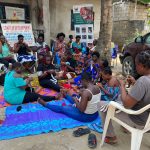Theme: Girls’ Vision for the Future.
Celebrated on October 11th, the international community highlights the work, leadership, and challenges faced by girls worldwide.
According to UNICEF:
- One in five young women aged between 20-24 years were married as children.
- Nearly one in four partnered/married adolescent girls have experienced sexual/physical abuse.
- Globally, 75% of new HIV infections among adolescents occur in girls.
- One in three adolescent girls suffers from anaemia, a form of malnutrition.
- Almost double the number of adolescent girls compared to boys are not in any form of education, employment, or training.
These vulnerabilities are exacerbated during disasters. Cameroon’s disaster profile is marked by violence, climate shocks, and disease outbreaks leading to massive displacement. The Sendai Framework for Disaster Risk Reduction (2015-2030) sets clear targets and priorities for Disaster Risk Reduction, emphasizing the role of young people, especially the girl child, in ensuring targets are met. One course of action in Cameroon would be to ensure that critical child services such as education and health services are inclusive and prepared for disasters. Belosy Africa has built strong partnerships with the delegations of social affairs, women’s empowerment, and youth affairs to ensure that displaced children, especially girls, have access to opportunities such as free education, training, and employment. At the community level, Belosy Africa has sensitized over 500 internally displaced women in their host communities on how to support the girl child in terms of their mental health, sexual and reproductive health, and ensuring that they are enrolled and stay in school. While advocating for more child-friendly policies for displaced children due to disasters, Belosy Africa continues to leverage community participation through youth volunteering to build resilient and disaster-prepared communities. Ensuring community preparedness for disasters paves the way for a bright future for every girl child.









